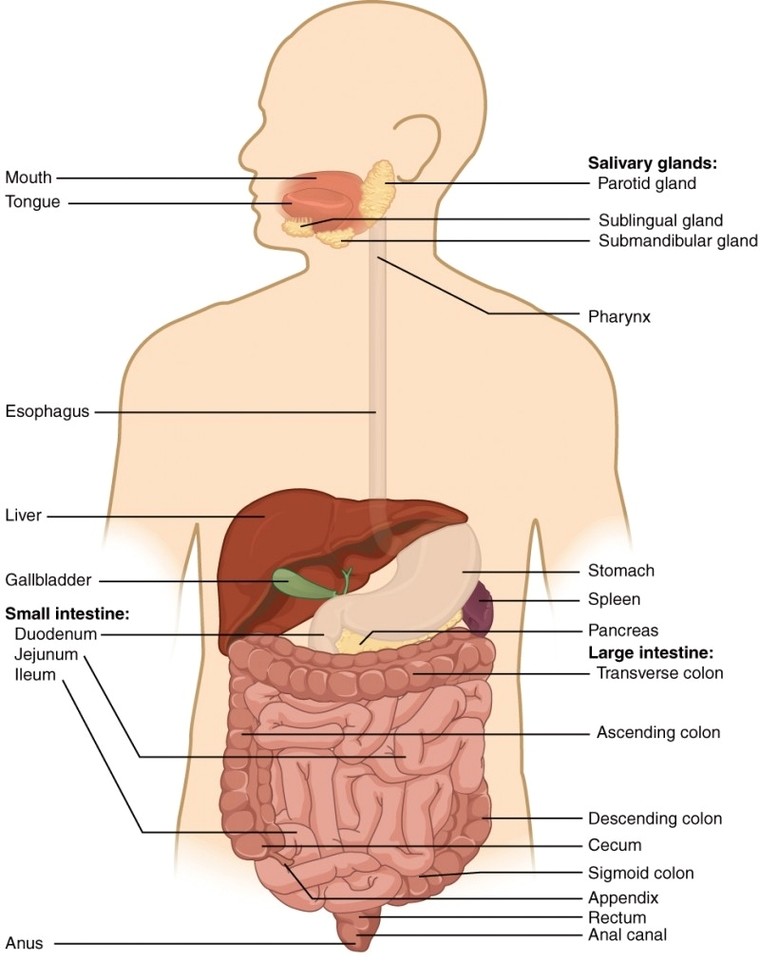
Components of the Digestive System: The digestive system includes the oral cavity, pharynx, esophagus, stomach, small intestine, large intestine, and accessory organs like the liver, pancreas, and gallbladder, all working together to process food and absorb nutrients.